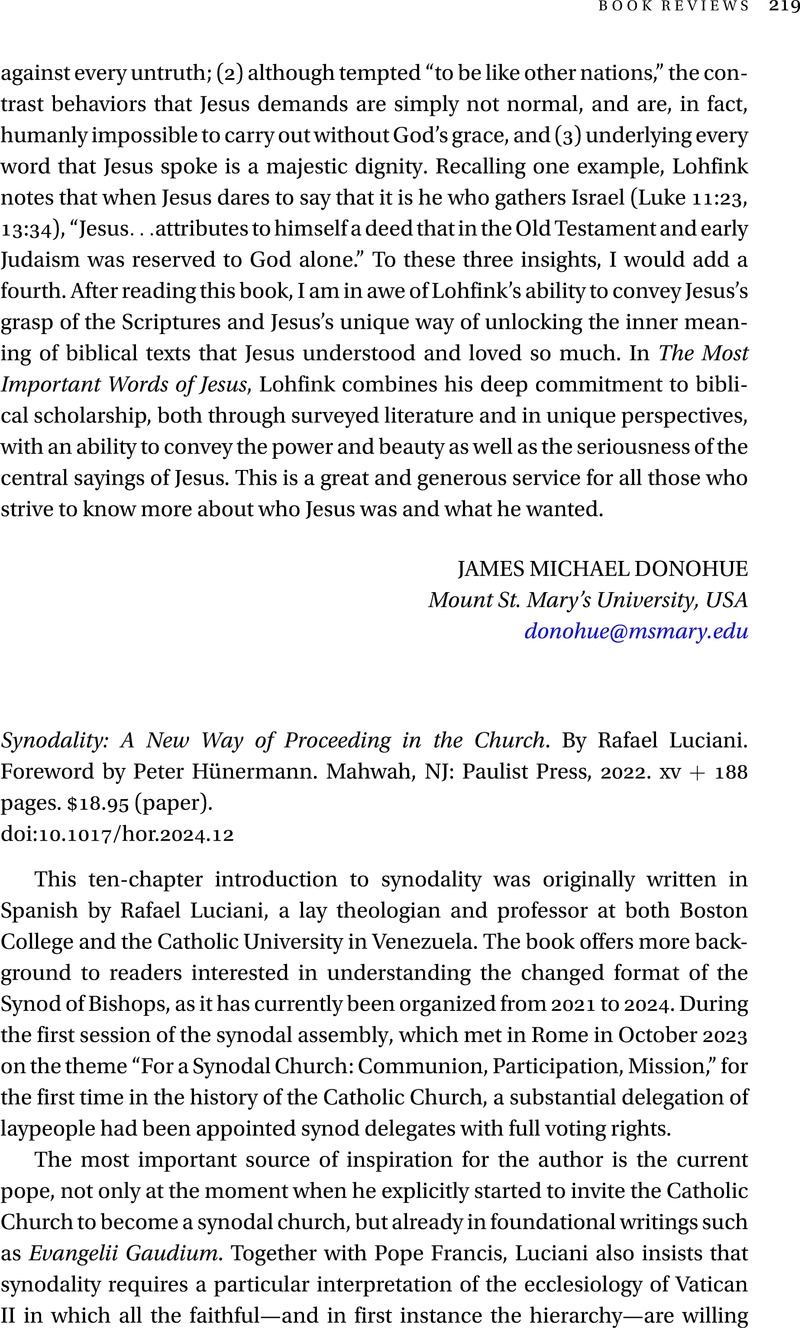No CrossRef data available.
Synodality: A New Way of Proceeding in the Church. By Rafael Luciani. Foreword by Peter Hünermann. Mahwah, NJ: Paulist Press, 2022. xv + 188 pages. $18.95 (paper).
Review products
Synodality: A New Way of Proceeding in the Church. By Rafael Luciani. Foreword by Peter Hünermann. Mahwah, NJ: Paulist Press, 2022. xv + 188 pages. $18.95 (paper).
Published online by Cambridge University Press: 29 May 2024
Abstract
An abstract is not available for this content so a preview has been provided. Please use the Get access link above for information on how to access this content.

- Type
- Book Review
- Information
- Copyright
- © College Theology Society 2024



